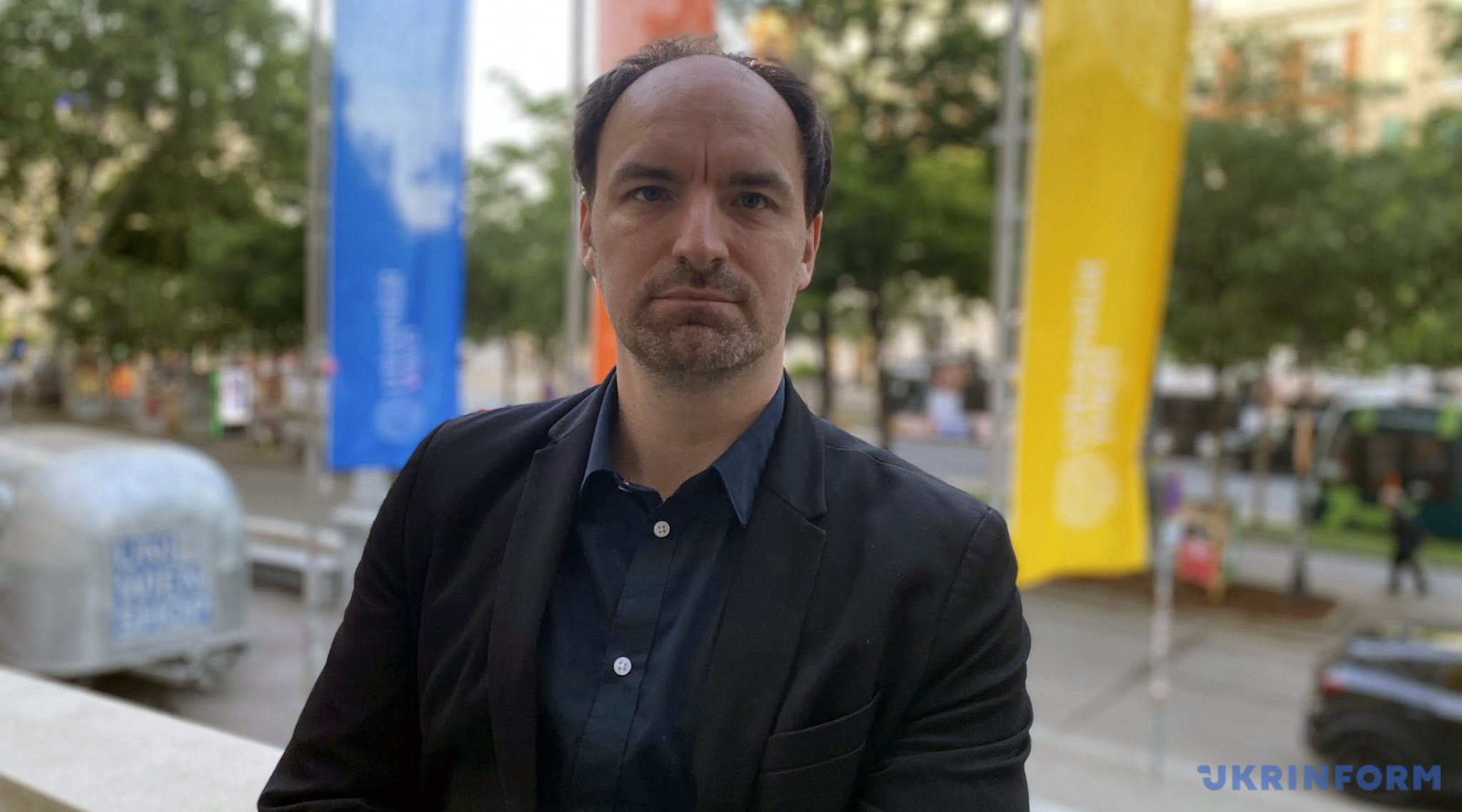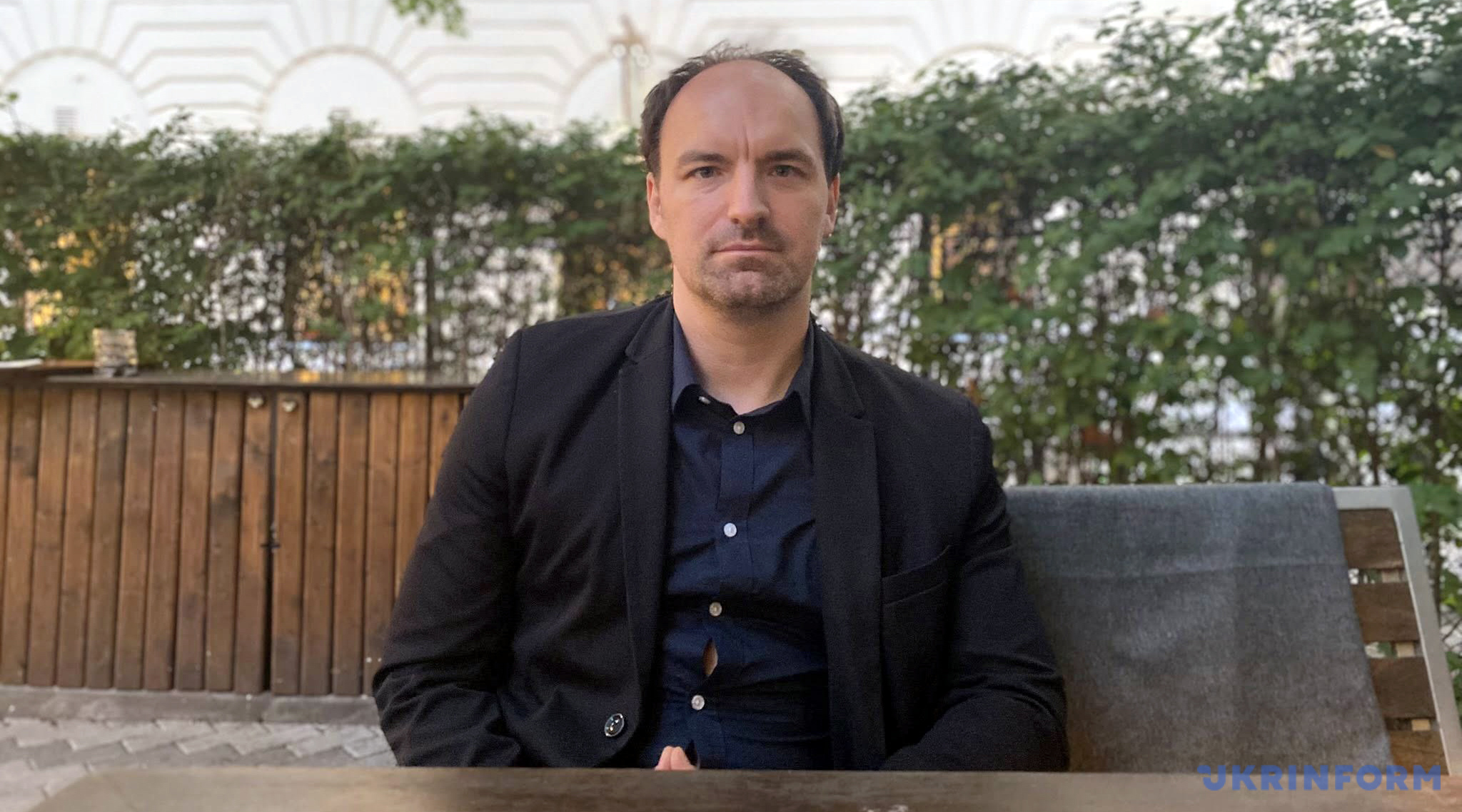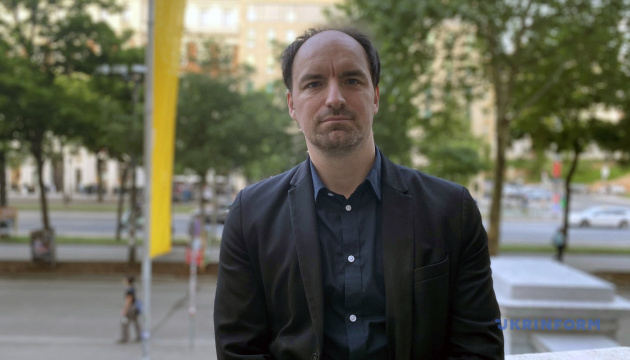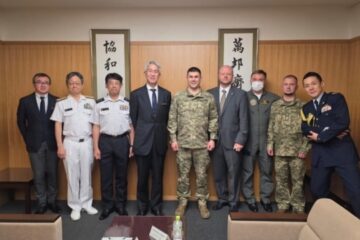Recently, Austria’s state security reported the exposure of a large-scale Russian disinformation campaign aimed at influencing public opinion in Austria and turning it against Ukraine. To achieve this, Russian agents sprayed graffiti (allegedly created by “Ukrainian activists”) featuring content that was unacceptable and offensive to Austrians.
Leading Austrian disinformation expert Dietmar Pichler points out that although most disinformation campaigns take place online, the real focus should be on targeting the actual organizers of such psychological operations. Efforts should be combined with public awareness initiatives and strengthening society’s “immunity” to disinformation — particularly through greater awareness about Ukraine and the mechanisms of Russian interference.
In an interview with Ukrinform, the founder of the Vienna-based Disinfo Resilience Network and author of analytical studies on the impact of Russian information operations in the German-speaking world, Dietmar Pichler, spoke about the scale, methods, and key narratives of Kremlin disinformation in Austria, especially those targeting Ukraine. He explained why Austria’s neutrality makes it vulnerable to such Russian campaigns and shared his vision of an effective counterstrategy.
AUSTRIA’S NEUTRALITY DISCOURSE MAKES IT MORE VULNERABLE TO RUSSIAN DISINFORMATION
– Austria recently exposed a large-scale Russian disinformation campaign aimed at manipulating public opinion against Ukraine. While the existence of such a campaign may not be surprising, the public acknowledgment by Austrian authorities is quite notable. What is your impression of this decision? Does it indicate that Austria is growing weary of Russian influence operations and seeking to make a clear statement?
– I personally appreciate that this investigation became public and widely reported, especially because it highlights that real people are involved – carrying out actions in the physical world, such as painting false-flag graffiti on walls to discredit Ukraine.
– In your view, what are the primary objectives of Russian information operations specifically in Austria? Do they align with those pursued by Russia in other European countries, or is there something unique to the Austrian context?
– Basically, they align with the usual European disinformation campaigns. One specific tactic we are seeing is that Russian propaganda – including official channels such as the embassy and the Ministry of Foreign Affairs – sometimes accuses Austria of violating its neutrality. The aim is to provoke a reaction and generate public pressure against the Austrian government.
– Does Austria’s neutral status make it more vulnerable to the promotion of pro-Russian narratives, for instance, through its role as a “neutral platform”? How does the Austrian public’s response to Russian messaging differ from perceptions in other EU countries, whether Western or Eastern European?
– I would say yes, the discourse around neutrality makes us more vulnerable to propaganda. Besides that, I would say all narratives, the intensity of propaganda and disinformation, and the eagerness to believe it are the same as in other Western European countries.
With neutrality, we have the problem that the movement of so-called “peace activists,” but also Russia apologists, demand neutrality in a political sense, which in reality amounts to a pro-Russian stance. Austria is only neutral in a military sense, and since it is an EU member, neutrality has become less important and less strict. History shows that even during the Cold War, Austria was part of the West, and not “between the blocs,” as some people believed –or still demand – today.
THE KREMLIN’S STRATEGY AIMS TO DEMONIZE UKRAINE AND ENGAGE IN VICTIM BLAMING
– What are the main themes and images about Ukraine that you observe in Kremlin narratives targeting the Austrian audience?
– The strategy aims to demonize Ukraine, engage in victim blaming, and distract from Russian aggression and guilt. One might be surprised, but old propaganda narratives like “the Russian language is banned,” “Ukrainians attacked ethnic Russians,” “Maidan was a coup,” or “Ukraine provoked Russia with its desire to join NATO” are still relevant and widely spread. Corruption is also frequently mentioned in the context of the war – of course, without ever acknowledging that the aggressor, Russia, ranks significantly worse on the corruption index.
– Amid ongoing international efforts to peacefully resolve Russia’s war against Ukraine, have you noticed an intensification of Kremlin disinformation campaigns in Austria’s information environment or the broader German-speaking region? Are there attempts by the Kremlin to manipulate discussions about peace to weaken support for Ukraine?
– The more that happens, such as talks about negotiations, international meetings, or especially disturbing news about Russia’s terrible war crimes, the more Ukraine appears in the headlines. This also increases the amount of disinformation and both subtle and overt propaganda narratives. More discussion means more targets for trolls, bots, and also real people who enter the information battle. Agents of influence, Westerners who are consciously or unconsciously serving as Russian assets, also become particularly active when Ukraine dominates the news.

THE MAIN CHANNEL FOR DISINFORMATION IS THE INTERNET, BUT FALSE BALANCE IN THE MEDIA IS ALSO A PROBLEM
– What are the primary channels and platforms for disseminating Russian disinformation in Austria?
– I would not argue against the fact that, as in all Western countries, the internet – and of course, especially social media – is the main channel of Russian disinformation. There is no question about that. However, the other channels matter a lot too.
We have pro-Russian books in our bookstores. We have pro-Russian academics (worldwide). We have pro-Russian narratives in our talk shows (the false balance problem), and we see Russian diplomats and propagandists as interview partners – not only on fringe media channels.
This content is, of course, also widespread on social media. You can promote the pro-Russian books there, share video clips of one of the many pro-Russian professors, or post a photograph of the printed commentary by the Russian ambassador in a newspaper that was shady enough to publish him.
All of that works on social media because it is “real-life” content. When we have professors claiming that “NATO is responsible” for the war, it is far more effective than an anonymous troll without a profile picture.
It is all very interconnected: as a society, we are quite aware that Russian propaganda happens online, but we have almost zero awareness of all the other channels where we encounter Russian narratives – especially when they are subtle. We are completely unprotected. I try to raise awareness about that issue, but it is not easy, because people prefer to attack an anonymous troll. That is easier than confronting a real pro-Russian person –someone who might even have some influence.
– From my observations, since Russia’s full-scale invasion of Ukraine in 2022, overt Russian propaganda in Austria’s traditional media and television has significantly decreased. However, the pursuit of balanced coverage of Russia’s war against Ukraine sometimes leads to a false balance, which in practice amplifies Kremlin narratives. Does this align with your assessments?
-When I saw that our public broadcaster referred to Bucha as an “alleged massacre,” I reacted immediately and criticized the wording—and fortunately, I was not alone. These incidents should not happen, because despite the criticism, people still trust our established media more than social media.
The problem is that we are not even discussing the fact that anti-Western narratives are quite often present in so-called “mainstream media.” We see them in talk shows (false balance panels with pseudo-experts), but they can also appear in interviews, guest commentaries, or even in some reports. It happens a little less often than before 2022, but the impact is severe — because our guard is down when we are outside social media. Social media is widely criticized for fake news and propaganda, but traditional media is not.
WHENEVER YOU SAY SOMETHING SUPPORTIVE ABOUT UKRAINE OR CRITICAL ABOUT RUSSIA, BOTS AND TROLLS WILL SHOW UP AND ATTACK YOU
– What role do social media play in such Russian operations, particularly in Austria’s media landscape? Which platforms do you consider the main vehicles for spreading these messages – X, TikTok, Telegram, or others – and why does Russia choose them?
– All channels matter: In social media, there are no physical borders. In Austria, we share an information environment with our neighbors from Germany and Switzerland. Germany in particular is heavily targeted by Russian propaganda on social media, and to some degree, this affects us too – because we often see the same content and read the same comments. It is not just TikTok; Instagram Reels also feature a lot of subtle or openly pro-Russian propaganda. I would not underestimate this type of content. It could be a social media influencer telling you that Ukraine or the West is to blame, or a video of a professor like Jeffrey Sachs claiming that Putin’s motive for the invasion was “to force Zelensky to negotiate.” They love these short clips, and thousands of channels are sharing the same videos over and over again. The logistics work well – this includes content from Russia Today too. German and English-language videos, combined with an army of trolls who comment on them and boost the algorithm, amplify these messages significantly.
– Which methods, such as bot networks, fake accounts, or targeted advertising, do you find most effective in promoting disinformation in Austria? Have you detected coordinated bot networks in Austria’s media space that systematically influence discussions or public sentiment?
– One thing Austrians should finally understand: bots, trolls, and even pro-Russian “activists” do not care about where we are—they care about what we are talking about.
This means all the pro-Russian propaganda profiles are constantly searching for keywords and monitoring conversations to interfere when the topic fits. To put it simply: whenever you say something supportive about Ukraine or critical about Russia, they will show up and attack you.
Since we speak German, they have a significant amount of resources dedicated to targeting this language group. Of course, Austria is also affected when Germany is targeted with sophisticated campaigns like the “Doppelgänger” operation, in which fake websites mimicking established media outlets were created to spread Russian disinformation.
The same bots promoting these fake websites also appeared on Austrian social media, targeting and attempting to influence Austrian users—something that members of my Disinfo Resilience Network can confirm.
THE MOST PRO-KREMLIN NARRATIVES COME FROM THE FREEDOM PARTY, BUT OTHER PARTIES ALSO HAVE RUSSIA SUPPORTERS
– Among Austria’s parliamentary parties, the Freedom Party of Austria (FPÖ) stands out for its rhetoric, which often echoes Kremlin narratives, such as criticizing sanctions against Russia or military and financial support for Ukraine. To what extent, in your opinion, does the FPÖ deliberately promote these pro-Kremlin messages?
– I think most of them know quite well what they are doing, but as long as it fits their general anti-establishment and EU-skeptical stance, they will not change it. They are following a broader trend seen in many European countries with their “Ukraine- and EU-skeptical” policy.
– Who else in Austria’s political landscape would you identify as witting or unwitting promoters of pro-Russian narratives?
– The Communist Party, not part of the national parliament but relevant at the regional level, maintains a traditionally “Soviet-friendly” perception of history and was strongly aligned with Moscow during the Cold War. This legacy is not completely forgotten. They oppose weapons support for Ukraine and express strong nostalgia for the 1980s peace movement—the largely one-sided Western movement against NATO’s Pershing II missiles.
Some Social Democrats share similar peace narratives and nostalgia, often combined with anti-NATO, anti-Western, and, in some cases, anti-Ukraine sentiments. However, these individuals do not represent the majority of the party.
There are also figures connected to the conservative party who have business interests in Russia, as well as ultra-conservative individuals who believe — much like the far right — that Russia has “preserved traditional values.”
The interesting thing about all these groups is that, despite their differences, they are able to unite around certain initiatives in support of (subtle) pro-Russian activism, which they often label as “pro-neutrality initiatives.”
– It’s noticeable that pro-Russian sentiments in Austria are present among both far-left and far-right groups. How do these groups differ in their approaches to Russian narratives, and are there any unexpected points of convergence?
– A place where the far left and far right — often, I believe, unconsciously — collaborate in their pro-Russian sentiments is social media. They support each other, share each other’s posts, and often do so without even knowing one another personally. Pro-neutrality initiatives and geopolitical articles or interviews also serve as platforms where the (anti-Western) far right and far left come together — but typically only those who are deeply, even radically, pro-Russian to the point where nothing else matters to them. At the May 9th rally in Vienna, where parts of the Russian diaspora march not only with Soviet flags but also with St. George’s ribbons and flags from the Russian Empire, they were joined by Austrians from both the far right and the far left.

AFTER 2022, ACADEMIC WORLD STARTED TO REASSESS UKRAINE, BUT PROPAGANDA STILL PERSISTS
– You have already mentioned the influence of Kremlin propaganda on the academic environment. Who are the key actors in promoting pro-Russian narratives in this sphere? How significant is their impact on shaping public opinion?
– The academic world has long been a valuable target for efforts to recruit or at least influence scholars in terms of worldview. The legacy of Soviet influence, particularly dating back to the Cold War, is still felt today. At Austrian universities, especially during the 1970s and 1980s, a sympathetic or soft stance toward the Soviet Union and China was relatively common in various academic fields. Many students from that era went on to become professors, and some academics who began their careers during that time remain active in one form or another.
Since the full-scale invasion of Ukraine in 2022, there has been some progress. At least now there is a conscious effort to move away from viewing Eastern Europe through a “Russian lens” and a growing focus on understanding Ukraine. Compared to the period before 2022, more lectures and public events are being organized to provide education in this area.
However, this shift does not negate the fact that many academics continue to hold problematic views. Some professors still blame NATO expansion for the Russian invasion, propagate distorted narratives about the events of 2014 in Ukraine, and maintain a broadly anti-Western worldview.
One academic who gained attention during the COVID-19 pandemic for her fringe positions also gave a lecture on Ukrainian history. Known for her television appearances, she has claimed that “Russia did not attack Ukraine in 2014; Ukraine attacked the provinces that wanted independence,” and has referred to President Zelensky as “quite a warmonger,” among other controversial statements.
Furthermore, some scholars from so-called “peace studies” programs express obscure and apologetic views regarding Russia’s war of aggression against Ukraine. While claiming to support peace, they often rationalize the actions of the aggressor and engage in a form of victim blaming – for example, accusing Ukraine of “nationalism” as a provocation.
The scene of anti-Western, Russian-apologist academics in Austria remains significant. These individuals are not only influential within universities but are also active and well-connected in initiatives outside the academic sphere.
THE AUSTRIAN GOVERNMENT HAS STARTED TO RECOGNIZE RUSSIA’S DISINFORMATION THREATS
– How would you assess the effectiveness of the measures taken by Austrian authorities to combat disinformation threats? How much of a priority is this issue for the federal government, and which institutions or interagency initiatives actively monitor and counter foreign information influence in Austria?
– Fortunately, it is no longer 2014 – a time when the authorities in Austria and across Europe largely ignored the growing threat of information warfare and hostile influence campaigns by the Russian Federation targeting the EU. Since 2022, awareness of these issues has increased significantly, including at the level of the Austrian federal government.
I am in contact with several individuals from government institutions responsible for monitoring disinformation and foreign interference – although I cannot go into detail, for obvious reasons. My hope is that the new government will continue and expand these efforts, allowing us to take meaningful steps forward in analyzing and countering these threats to our democracy. I have offered the new government my support in order to enhance cooperation in this field.
It must be said, however, that any government in a democratic country has limited means to intervene directly in the information space. This is precisely why civil society is such an important actor in this area. Its role in promoting awareness, resilience, and accurate information cannot be overstated.
– In your opinion, what are the most effective strategies for countering Russian disinformation in Austria and beyond? What measures would you recommend to the government and civil society?
– When we look at what the Ukrainians have done—along with the Baltic states and, of course, Finland – we see a significant difference in one central area: the willingness to name the elephant in the room – Russian disinformation, or more broadly, disinformation orchestrated by authoritarian regimes.
Before the full-scale invasion of Ukraine – and in some cases, even now – this issue is often not mentioned at all in Austria. Public discourse frequently focuses on trivial topics, while the core threat remains unaddressed. In many cases, those teaching media literacy (where such courses exist at all, which is still rare in schools) lack the necessary expertise in foreign interference and international relations.
A crucial step forward would be to acknowledge that disinformation is not limited to social media, nor is it restricted to the far right. Russian propaganda is pervasive – it occurs across platforms, political spectrums, and demographics. To build societal resilience, we must educate people and “immunize” them by raising awareness about Ukraine and how Russian interference actually works.
One additional recommendation: we must expose Western propagandists – agents of influence – who are paid by Russia. Unfortunately, some people only grasp the seriousness of the issue when they learn that someone has accepted money. Transparency in this regard is essential.
Vasyl Korotkyi, Vienna
Source: Dietmar Pichler, Austrian expert on countering disinformation




